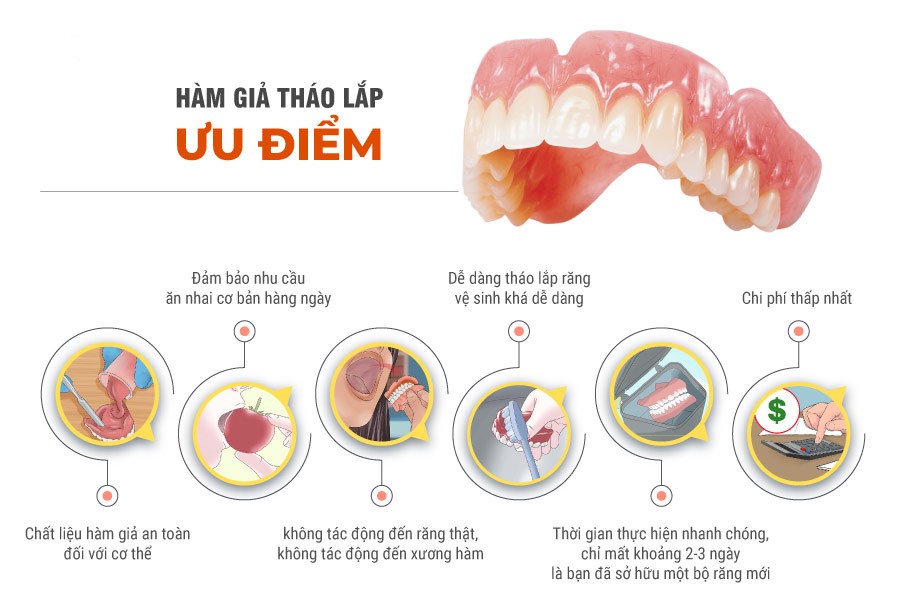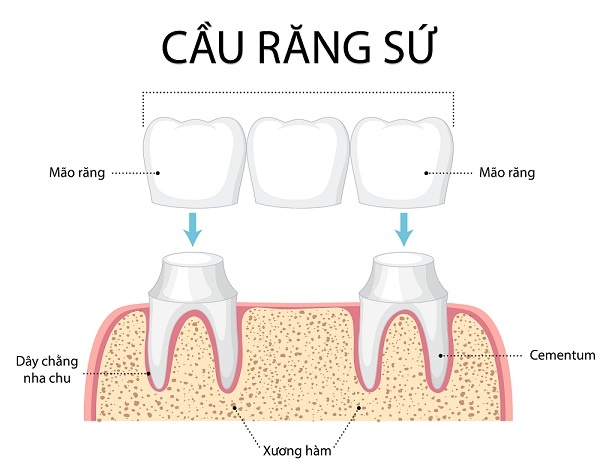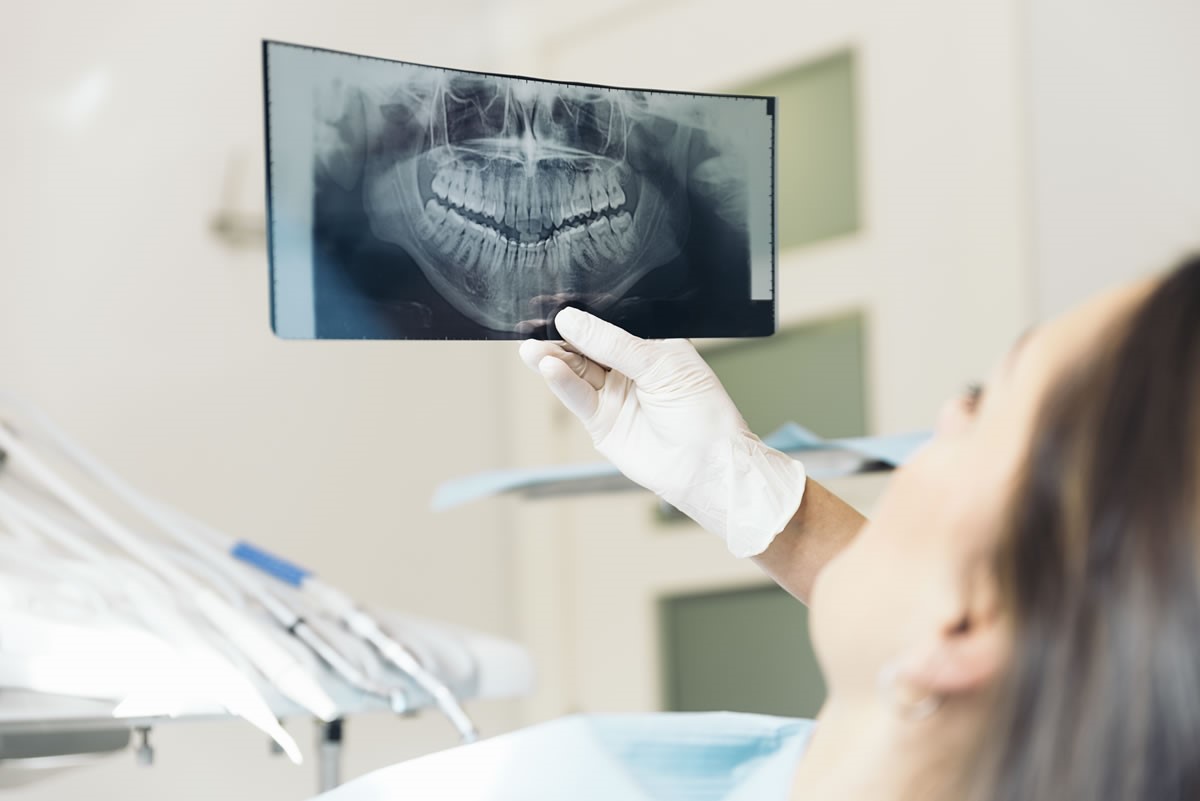Tooth loss not only affects aesthetics but also causes many inconveniences in daily life. With the advancement of modern dental technology, dental implants have become the optimal solution to restore lost teeth, ensuring chewing function and preserving the beauty of your smile. So, what are dental implants? How much do they cost? Let’s find out more with Amanda Dental Clinic below!
What is a Dental Implant?
Dental implant is a method of surgically placing a titanium post directly into the jawbone to replace the lost tooth root. A ceramic crown is then attached to the implant post, forming a complete tooth that resembles the shape and function of a real tooth.
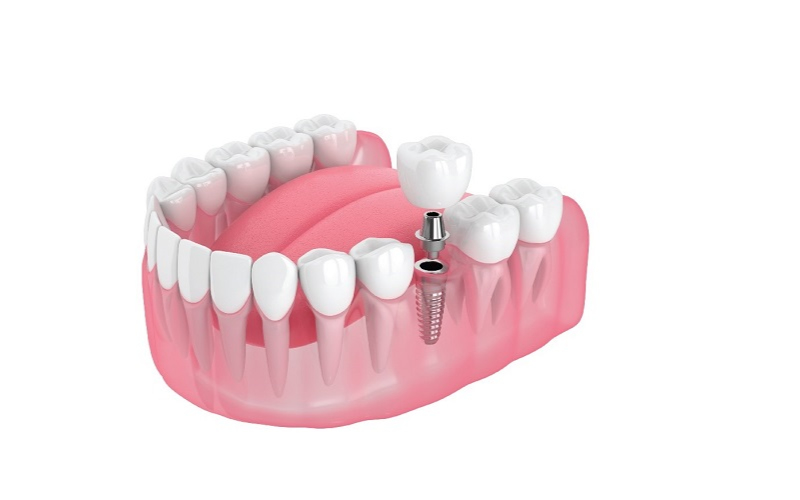
Compared to traditional tooth restoration methods, implants are rated higher in terms of effectiveness and durability. Therefore, implants have become a popular choice and one of the most advanced tooth restoration solutions in modern dentistry.
What is the structure of a dental implant?
Dental implants consist of three main parts, closely mimicking a natural tooth, including:
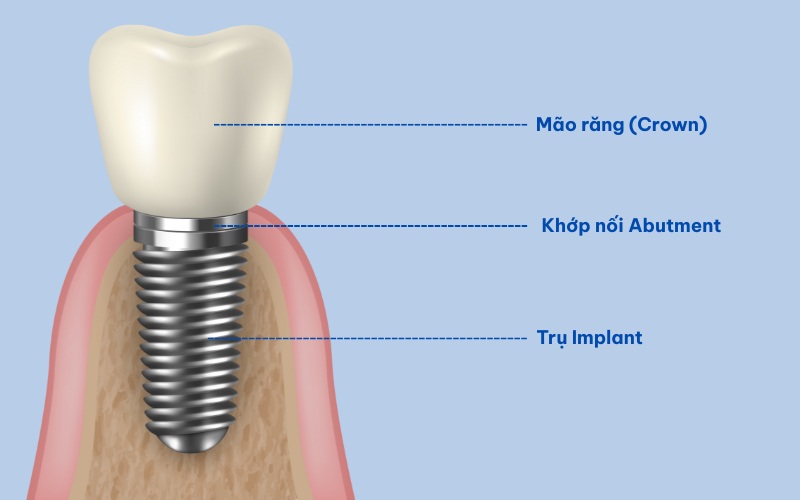
Implant Post
This is a cylindrical, tapered component made of titanium with a threaded or roughened surface. The implant post is made of highly biocompatible titanium, has good osseointegration ability, and has been safety tested. It is implanted into the jawbone at the site of the missing tooth, supporting a ceramic crown or bridge. There are various types of implant posts on the market, with different origins, brands, and characteristics.
Abutment Connector
A metal connector attached to the implant post after it has integrated with the jawbone. The abutment connects the implant post to the ceramic crown, forming a solid structure. Abutments are made from biocompatible materials such as titanium, gold, ceramic, or zirconia.
Ceramic Crown
The crown is made from alloy or dental-grade ceramic and is placed on the implant via the abutment. The crown is meticulously designed with shape and color similar to natural teeth but hollow inside.
Who should get dental implants?
Dental implants are an advanced tooth restoration solution with many outstanding advantages. However, not everyone is suitable for this method. Below are candidates who should consider dental implants:
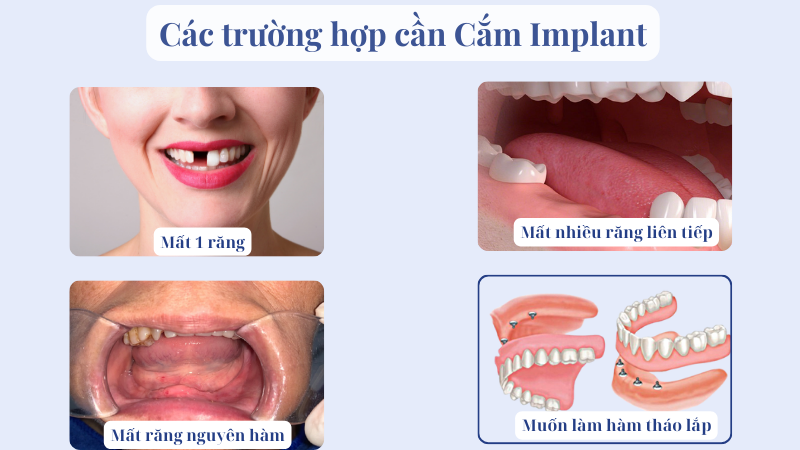
- People missing one, several, or all teeth, causing difficulty in chewing, affecting aesthetics and confidence when communicating.
- People with sufficient jawbone to support the implant or eligible for bone grafting.
- Healthy oral tissues, free from infection.
- No health conditions that interfere with healing or bone integration.
- Not eligible for or unwilling to use removable dentures.
- Wishing to improve speech after tooth loss.
- Willing to commit to a treatment process lasting several months.
- Non-smokers (or willing to quit smoking).
Advantages of Dental Implants
Dental implants offer many superior benefits compared to traditional tooth restoration methods, including:
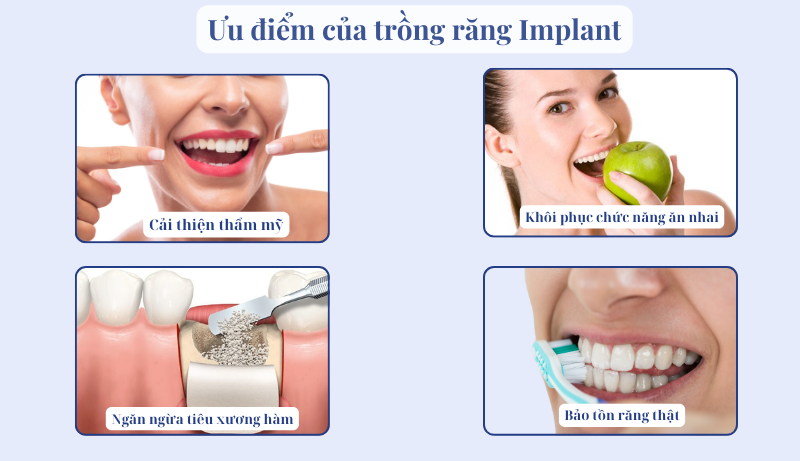
Restores chewing function: Dental implants have excellent load-bearing capacity, allowing you to comfortably chew various types of food, including hard and chewy items. They also improve food breakdown, aiding digestion.
Improves aesthetics: Implant crowns, often made from premium materials like zirconia or lava, are meticulously designed to match the shape and color of natural teeth. The gum fits snugly around the implant neck like a real tooth, making implants difficult to detect as artificial. This helps restore a confident smile and natural appearance.
Prevents jawbone loss: After tooth loss, the jawbone tends to deteriorate due to lack of stimulation. The implant post acts like a real tooth root, stimulating jawbone growth and maintaining density, thereby preventing bone loss. This helps preserve facial structure and prevents premature aging caused by missing teeth.
Preserves natural teeth: A key benefit of implants is that they do not affect adjacent healthy teeth. Unlike bridges, implants stand independently at the site of the missing tooth and do not require grinding down surrounding teeth.
Long lifespan: Dental implants are durable and can last long-term, even a lifetime with proper care, helping reduce long-term restoration costs.
Implant Placement Methods
Before performing implant placement, the dentist will assess the patient’s oral condition to determine the most suitable treatment. Currently, there are three common implant methods:
Single Tooth Implant
This technique is indicated when one or multiple non-adjacent teeth are missing. The dentist will place individual titanium implants into the jawbone.

Implant-Supported Bridge
When three consecutive teeth are missing, the dentist will place an implant-supported bridge. Two titanium implants are placed at the ends of the missing section to support the bridge.
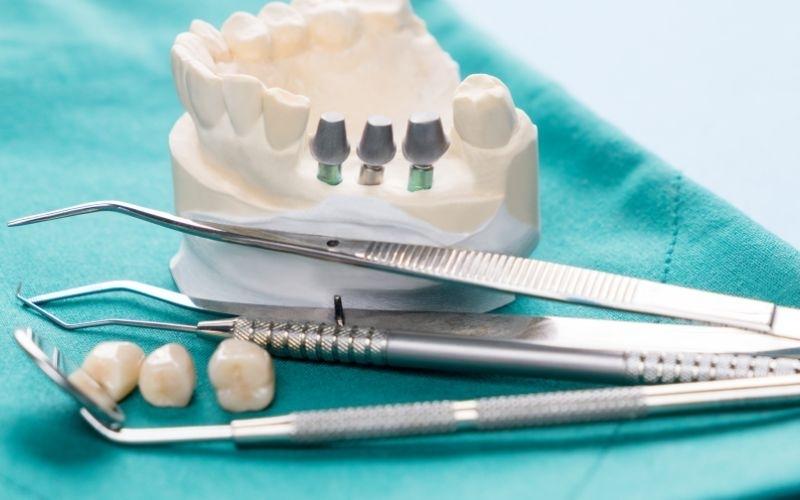
Full Arch Implant
This comprehensive solution restores all missing teeth, maximizing chewing function and aesthetics. Full arch implants are the most complex technique and require careful analysis. The main approaches include: All-on-4, All-on-6, and zygomatic implants.
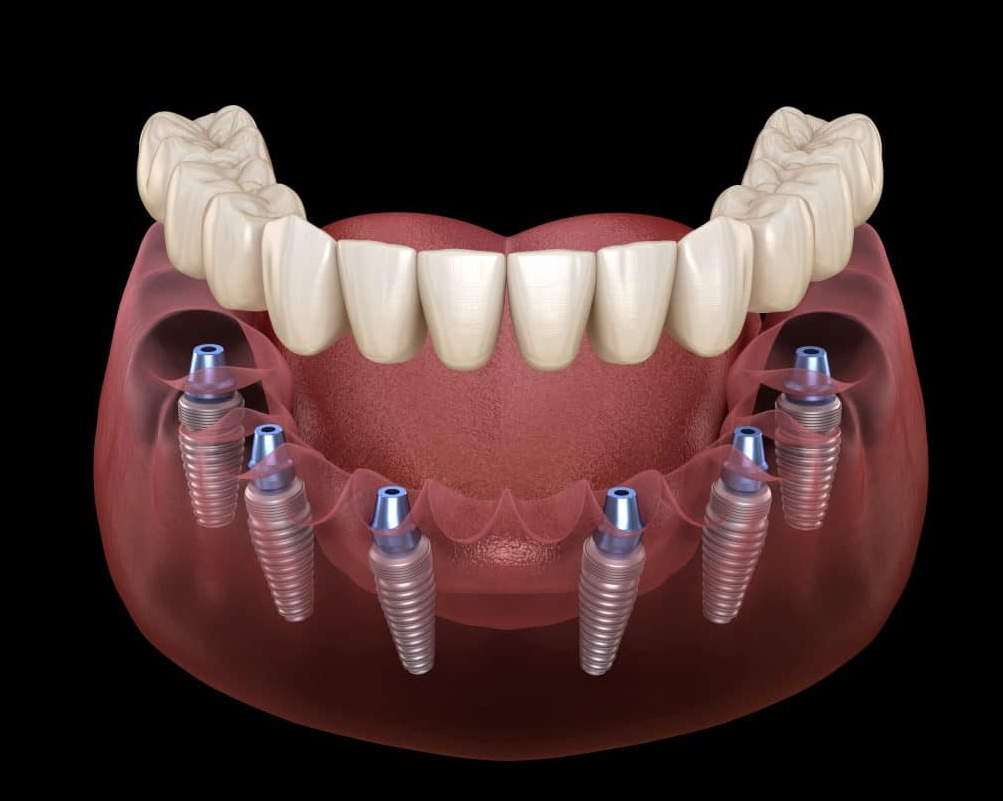
Standard Medical Implant Procedure
The dental implant procedure follows strict medical standards and involves several steps requiring professional expertise. Here are the basic steps:

Step 1: Consultation and planning: General examination, 3D CT scan to evaluate oral and bone health, followed by treatment planning (implant type, cost, timeline).
Step 2: Implant surgery: Final health check, then local anesthesia or sedation and surgical placement of the implant into the jawbone.
Step 3: Taking impressions and temporary tooth placement: Impressions are taken for the crown while a temporary tooth is fitted for aesthetics and function during healing.
Step 4: Follow-up visits: Periodic checkups ensure proper healing and absence of complications.
Step 5: Final crown placement: After 2–6 months, once the implant integrates with the bone, a permanent crown is placed, completing the restoration (usually 3–5 visits over 5–14 days).
Possible Implant Complications
Although dental implants are a modern and effective solution, some side effects can occur. While rare, minor and treatable issues may include:
- Infection at the implant site
- Damage to surrounding teeth or blood vessels
- Nerve injury causing pain, numbness, or tingling in teeth, gums, lips, or chin
- Sinus problems if the upper jaw implant invades the sinus cavity
To minimize risks, thorough oral hygiene before and after surgery is essential. Dentists must strictly follow standardized surgical protocols and use high-quality tools and materials to ensure patient safety.
Post-surgery, patients must adhere to special care and dietary guidelines from the dentist. Regular checkups are also crucial to monitor implant condition and detect issues early.
Important Notes for Implant Placement
Implant surgery has a high success rate. However, in rare cases, osseointegration may not occur as expected, possibly due to factors like smoking. If integration fails, the implant is removed, the bone is cleaned and restored, and surgery can be repeated after about 3 months.
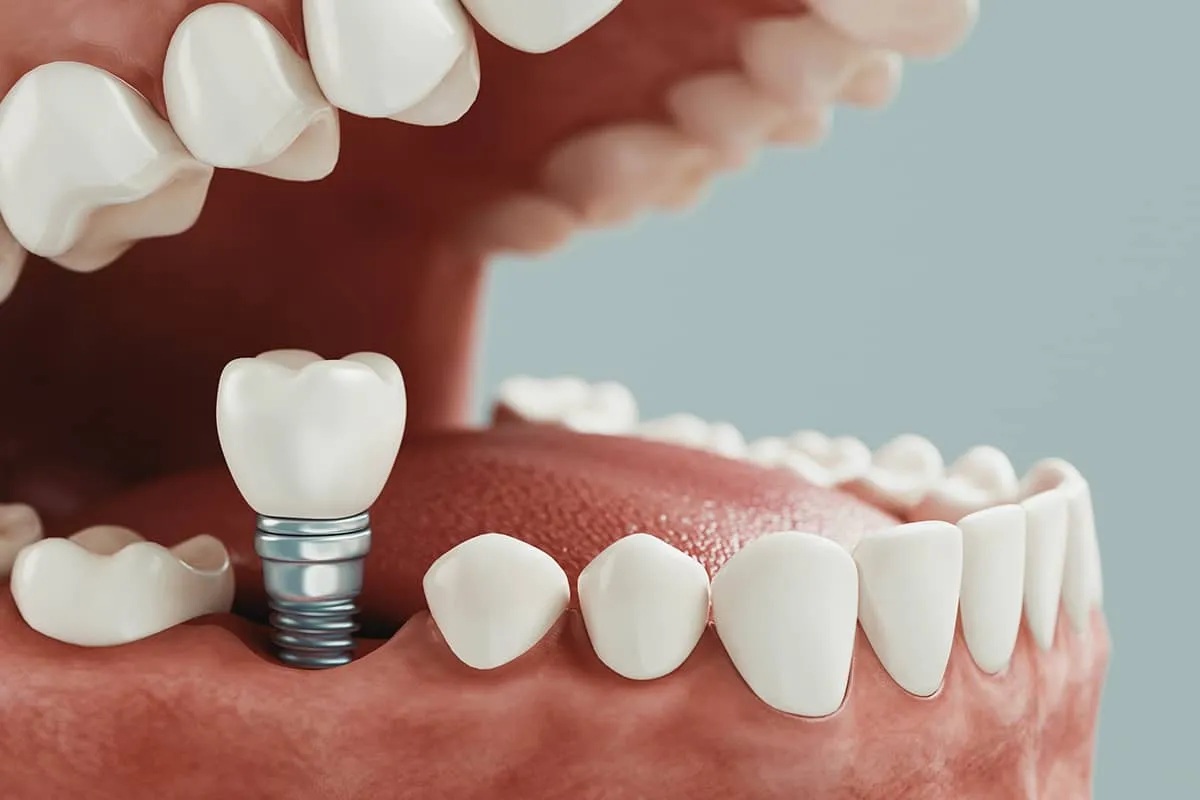
To prolong implant life and protect remaining teeth:
- Maintain thorough oral hygiene: Clean implants, prosthetics, and gums like natural teeth. Use special brushes (e.g., interdental brushes) for hard-to-reach areas.
- Regular dental visits: Frequent checkups help assess implant function and get advice on proper care.
- Avoid bad habits: Don’t chew hard objects (ice, hard candy), avoid tobacco and coffee (staining), and treat bruxism early (if any).
Dental Implant Costs and Influencing Factors
Dental implants are the optimal tooth restoration solution, offering nearly the same chewing function and aesthetics as natural teeth. However, this method usually costs more than others. Below are estimated prices and factors that influence implant costs:
Factors Affecting Cost
- Type of implant post: Each type varies in origin, material, and production technology, affecting price.
- Number of teeth to restore: The more teeth, the higher the total cost.
- Jawbone condition: Bone grafts, sinus lifts, and other procedures may be needed if bone loss is present.
- Additional services: CT scans, blood tests, and pre-implant dental treatments can add to the cost.
- Surgeon’s skill level: Highly experienced dentists offer safer and more effective treatment, but usually charge more.
- Clinic infrastructure: Clinics with advanced equipment and sterile environments may have higher service fees.
Payment Options and Installment Programs
- Many clinics now offer flexible payment plans, including 0% interest installments, to ease the financial burden.
- Consult directly with the clinic to learn about installment options and choose the best payment method.
Reference Price List at Amanda Dental Clinic
Below is a reference table of Implant services at Amanda Dental Clinic:
| GENERAL EXAMINATION AND CONSULTATION ORTHODONTICS, AESTHETICS, IMPLANT | FREE |
| Orthodontic consultation and treatment planning without X-ray | 1,000,000 |
| Orthodontic consultation with X-ray and treatment planning | 2,000,000 |
| Invisalign consultation with scan and treatment planning | 3,000,000 |
| OFFICIAL IMPLANT DENTAL IMPLANTS | ||
| Service | Unit | Price (package: Fixture, Healing, Abutment and standard crown) |
| Biotem Korea Implant | 01 Tooth | 12,000,000 |
| Dio Korea Implant | 01 Tooth | 15,000,000 |
| Osstem Korea Implant | 01 Tooth | 15,000,000 |
| Dentium Korea Implant | 01 Tooth | 18,000,000 |
| Dentium USA Implant | 01 Tooth | 20,000,000 |
| Alphadent Germany Implant | 01 Tooth | 22,000,000 |
| SIC Swiss Implant | 01 Tooth | 28,000,000 |
| Straumann Swiss Implant | 01 Tooth | 35,000,000 |
| Aesthetic crown on Implant | 01 Tooth | 4,500,000 |
| Artificial bone graft level I | Unit | 6,000,000 |
| Artificial bone graft level II | Unit | 8,000,000 |
| Collagen membrane | Unit | 5,000,000 |
| Titanium mesh | Unit | 5,000,000 |
| Closed sinus lift one side | Time | 10,000,000 |
| Closed sinus lift both sides | Time | 15,000,000 |
| Open sinus lift one side | Time | 12,000,000 |
| Open sinus lift both sides | Time | 18,000,000 |
| All on 4 Dentium Korea | Arch | 140,000,000 |
| All on 4 Dentium USA | Arch | 160,000,000 |
| All on 4 Straumann Swiss | Arch | 180,000,000 – 220,000,000 |
| All on 6 Dentium Korea | Arch | 160,000,000 |
| All on 6 Dentium USA | Arch | 180,000,000 |
| All on 6 Straumann Swiss | Arch | 200,000,000 – 260,000,000 |
Why Choose Amanda Dental Clinic for Implants?
To enjoy a safe and comfortable implant experience, many patients trust Amanda Dental Clinic for the following reasons:

Experienced Dental Team
Amanda Dental Clinic is a trusted implant center with a highly experienced team that has successfully treated various tooth loss cases. The team continually updates their knowledge with the latest techniques and technologies.
Digital Implant Technology
Amanda invests in modern equipment like 3D Cone Beam CT scanners and 3D implant design software to ensure precise and safe procedures.
Global-Standard Implants
Using internationally recognized implant brands, especially convenient for overseas Vietnamese who may need service abroad without returning to Vietnam.
Standard Medical Protocols
Amanda follows strict medical standards to ensure safety and sterility. Each patient receives a detailed, personalized treatment plan.
98% Full-Mouth Implant Success Rate
A 98% success rate demonstrates the clinic’s effectiveness in full-mouth restorations, providing chewing and aesthetic function.
Transparent Consultation and Costs
Clear implant consultation and treatment planning, with published pricing and no hidden costs post-treatment.
Is Getting Dental Implants Painful?
Many people fear pain from dental implants. However, with modern techniques, the procedure is often less painful than expected.
Before surgery, the dentist will administer local or general anesthesia depending on case complexity and health condition. As a result, you won’t feel pain during the procedure. Modern equipment minimizes tissue and bone trauma.
After the anesthesia wears off, mild soreness, swelling, or discomfort may occur but is usually short-lived and manageable with prescribed painkillers. Following post-op care instructions is key to reducing pain and speeding recovery.
How Long Does a Dental Implant Take?
The actual implant procedure is quick—about 15–30 minutes. However, complete restoration takes 3–6 months for full osseointegration, depending on jawbone health.
Details:
- Implant placement takes 15–30 minutes for simple cases.
- After a week, the gum heals—return for check-up, suture removal, and imaging.
- Osseointegration takes 3–6 months, the most critical stage.
- Once integrated, the final crown is placed for a complete restoration.
What Is the Best Age for Implants?
Doctors recommend implants for adults 18 and older. Before that age, the jaw is still developing and may not support the implant securely.
With the ability to restore chewing, aesthetics, and long-lasting results, implants are a top choice for those seeking confidence and better quality of life. However, choosing a reputable clinic and skilled dentist is crucial for success.




